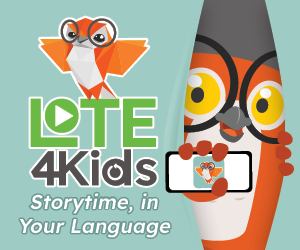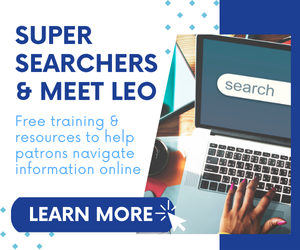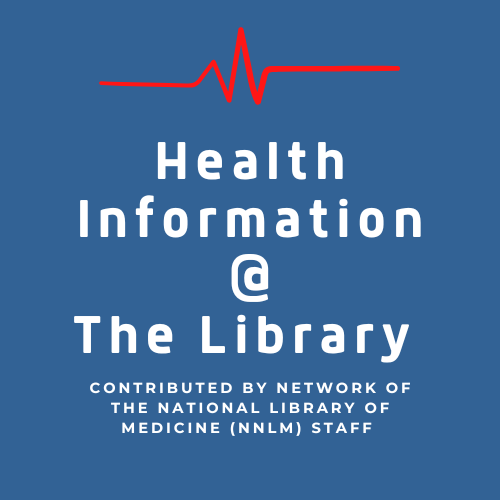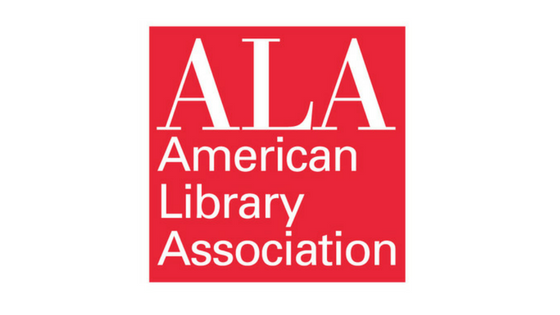E-Books, E-Book Readers, and Next Steps
Here’s a scenario that recently occurred at Topeka and Shawnee County (Kans.) Public Library (TSCPL). Topeka is currently participating in the Big Read, a grant-funded, community-wide reading program.
TSCPL picked The Maltese Falcon by Dashiell Hammett as its Big Read book. It is available in paperback and an audiobook version from Overdrive. One of TSCPL’s patrons (the general manager of a local TV station) decided to check out the audiobook version on his Mac. After an hour of frustration, he called the library for some help.
Were we able to help him? No, not really. For some reason, his Web browser didn’t like the Overdrive website. He wasn’t able to download the “unlimited use” version of the audiobook because it was in the Windows Media Audio (WMA) format. Although he could download the Mac-friendly MP3 format, it was checked out and therefore unavailable.
The patron ended up frustrated with Overdrive, with the library, and had a bad experience with TSCPL’s digital content. Sound familiar?
The Chief Officers of State Library Agencies (COSLA) noticed this issue coming up as well and they have actually been taking some first steps toward figuring the problem out. This formally began this summer when COSLA released COSLA: eBook Feasibility Study for Public Libraries.1 From the report:
In the fall of 2009, the Chief Officers of State Library Agencies (COSLA) began an internal conversation about [e-books]. What will they mean to the future of libraries, especially public libraries? Will these institutions be able to turn another digital format to its advantage, as they have with audiobooks? Or is it different this time? COSLA members wanted to arm themselves for action, instead of waiting to see how commercial forces would impact popular reading materials and the public library’s central role in providing them.2
We believe this report is actually quite an important document that deserves wider attention, so we wanted to use this issue’s column to highlight the work done by COSLA.
So what’s the scoop? Well, COSLA set up an e-book reader task force and worked with outside consultants to “learn from knowledgeable librarians and industry experts about the direction of the [e-book reader] and [e-book] marketplace, and more generally, what public libraries need to do to continue to grow and improve their downloadable [e-book] services.”3
The COSLA report originally started with the goal of researching the viability of creating an actual e-book reader for libraries and library patrons to use and circulate, which certainly isn’t a bad goal. Do you know how many e-book readers there are right now? A partial list of e-book reader manufacturers include companies such as Sony, Barnes & Noble, Amazon, and Apple.
And file formats? Let’s try .arg, .azw, .djvu, .epub, .html, .lbr, .lit, .mobi, .mp3, .opf, .pdb, .pdg, .pdf, .tr3, .txt, and .xeb for starters.4 Do all these e-book readers and file formats play nice with each other, or even play nice with library e-book services, like Overdrive? Nope.
Not surprisingly, early on in COSLA’s research it became clear that building yet another e-book reader device might not be the best way to go for libraries. As technology advances and e-book reader prices continue to drop, creating a new device specifically for libraries would likely be an unwise move for libraries with limited funds.
But it sure would be helpful if they did play well with each other, wouldn’t it? In fact, we had a chance to chat a bit with Jim Scheppke, the Oregon state librarian and a driving force behind the COSLA report, who added “the certification of e-book readers for library use should be pursued with participation by public librarians.”
Can you imagine? Instead of more than sixteen different e-book file formats, a plethora of devices, and multiple vendors that have to deal with prehistoric digital rights management (DRM) limitations, libraries could have a “stamp of approval” for e-book readers that actually work with our libraries and our vendors. That would be great. Does anyone else have library patrons asking “which e-book reader should I buy? What works best with your library?” TSCPL sure gets those questions. It’d be nice if libraries had an e-book reader stamp of approval, so we could cover all the bases at a higher level than local and what we think works best right now.
Instead of making a new library-specific device, COSLA came to some powerful conclusions in their research, including:
- Finding a low-cost way to lend devices through the library or let people try them out.
- Improving the ease of use for discovering and getting library e-books.
- Expanding access to e-books through larger collections and national buying pools while delivering real-time local statistics in a manner that helps library
funders see the value of largescale collaboration at the local level. - Applying leverage to publishers and vendors for better pricing, licensing models, more reasonable copyright or DRM models around shared use, and standards.
- Exploring how libraries can transition from an emphasis on content supplier to creating spaces that invite social interaction around learning and living literature.
Let’s examine some of these.
Pricing, Formats, and Access
Right off the bat, the report concludes that more needs to be done to improve library purchasing power through consortia purchasing, and that access to these resources, for both patrons and libraries with limited funds, is a big challenge. As Scheppke mentioned, “In Oregon, our biggest concern relates to equalizing access across the state. And other state library directors in COSLA share that concern. We want high-quality access in our libraries and we don’t want any of our libraries to be left behind in the e-book revolution.”
COSLA is off to a great start at the national level, and certainly isn’t alone in thinking and working on this issue. The American Library Association (ALA) recently used some of its muscle to take a stand on e-books and access as well. At the 2010 ALA Annual Conference, ALA Council passed “A Resolution to Insure Equitable Access to All Formats of Electronic Content through Libraries,” which includes
the formation of an ALA Presidential Task Force charged with (a) studying the issue of electronic content and distribution infrastructure for libraries, (b) developing a list of potentially practical, effective collaborations and courses of action that ALA and libraries around the country could engage in, (c) drafting a policy for ALA to adopt that work towards and encourages the creation of an effective electronic content and distribution infrastructure for libraries, and (d) submitting a report to Council at ALA Annual Conference 2011.”5
According to the COSLA report,
most [respondents] feel publishers are the key. Nearly everything bad about digital media for individuals or libraries stems from their business practices: excessive copyright restriction and DRM that make titles hard to share, overpriced content, lack of standard formats to work on any device, separate purchasing by format, and licensing requirements that ignore how people think about or use digital media in a shared model.6
So clearly ALA and COSLA deserve some kudos and attention for being willing to initiate these discussions and take a stand. Certainly much more is needed, but this is definitely solid progress on a critical issue.
Self-Publishing
Another intriguing facet of the sea change we are seeing in e-books, e-book readers, and consumption comes in the form of self-publishing. The COSLA report states that “many people are self-publishing for a direct mode of expression, not money. Experts want to share what they know, people have personal stories to tell, artists want to control their work. While traditional publishing fell slightly in 2009, self-publishing grew 181%.”7
Given the market share sizes that are often projected for this growing area of publishing in the coming decades, it is unsurprising (but edifying) to see COSLA recommend that public libraries should be champions of self-publishing and should feature self-published books in their e-book offerings.
Copyright and Fair Use
As if to drive home the importance of the issues of access rights, publishing shifts and consumption patterns, COSLA states that “libraries need to foster greater awareness and conversation about copyright and fair use issues that might threaten their [e-book] services . . . as traditional printed book lending shifts more and more to downloadable [e-books].8
COSLA suggests that groups working to address this issue could work with organizations such as the Internet Archive, Electronic Frontier Foundation, and American Civil Liberties Union to sponsor debates and discussions about fair use and copyright issues. COSLA also mentions that organizations, such as (our favorite) ALA, could continue and even expand their lobbying and legislative efforts in calling for digital fair use provisions.
New Uses for Library Space
A final recommendation from the report reveals that COSLA is thinking about how library space will be allocated when books don’t take up quite as much physical space in our libraries. As print collections start to shrink, libraries should take advantage of the opportunity to repurpose their space and experiment with new services. COSLA thinks it’s time for libraries to discover some new uses for our spaces.
Participants discussed new roles for public libraries, as collections increasingly become digital and popular materials become plentiful and cheap in the marketplace. At the heart of public libraries is a belief that democracies benefit from having a place that celebrates the open exchange of ideas. How can we find new ways to do this that go beyond collections?9
David has been sharing somethingn similar in recent presentations. He mentions a youth services department, and asks “What would YA librarians do if they didn’t have print books to deal with?” Usually, hardcore YA librarian activities such as storytime, crafts, homework help, search assistance, and gaming nights are mentioned pretty fast. Still sounds very much like a library to us!
Some of you might think this would never happen—or at least not any time soon. Have you heard about Cushing Academy in Massachusetts? The school library recently got rid of its print collection and has created an interactive learning center model that focuses on study spaces, interactive data, and e-book readers for everyone. From their library website:
We wanted to create a library that reflected the reality of how students do research and fostered what they do—one that went beyond the stacks and embraced the digital future.10
Again, it still sounds like a library to us.
Scheppke said, “We’re going to watch these issues very closely and we are going to stay engaged. We are ready to intervene so that no library is left behind.” We think that’s great. We also think that more libraries need to start examining these issues very closely. In fact, I’ll bet they’re already impacting you. What are you going to do about it? Let us know!
References and Notes
- Chief Officers of State Library Agencies (COSLA), COSLA: eBook Feasibility Study for Public Libraries, June 30, 2010, (accessed Oct. 29, 2010).
- Ibid., 3.
- COSLA, “State Librarians’ Report Suggests Ways to Advance eBook Services,” press release, July 23, 2010, (accessed Oct.29, 2010).
- See a comparison of e-book readers (accessed Oct. 29, 2010).
- ALA Council, (accessed Oct. 29, 2010). In the spirit of openness, we should mention that this resolution was coauthored by Michael, who will also serve on this presidential task force.
- COSLA, COSLA: eBook Feasibility Study for Public Libraries, 11.
- Ibid., 40.
- COSLA, “State Librarians’ Report Suggests Ways to Advance eBook Services.”
- Ibid., 48.
- Cushing Academy, “Fisher-Watkins Library: A LibraryTransformed,” (accessed Oct. 29, 2010).








